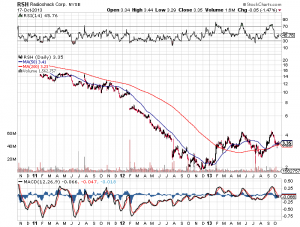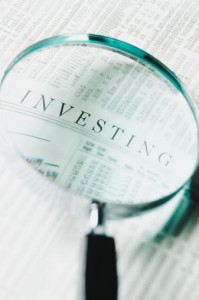One of the first things we have to look at from the value investing perspective is the price/book value ratio(P/B Ratio). The book value is defined by total assets – total liabilities/divided by total number of shares outstanding or it could also be determined by dividing shareholder equity/total number of shares outstanding. There are other ways to calculate the book value, but that is the most basic form.
Now, without making this too complicated, book value per share basically means the value left over if you decide to liquidate the company, sell all inventory and assets, pay off all liabilities and return all remaining capital to the shareholders. For example, a P/B Ratio=1 means that if the company is liquidated at that time you will get $1 for every $1 invested. The P/B ratio of 5 means that for every $5 dollars you have invested in the stock, if the company is liquidated now you will only get $1 back. The P/B ratio of 0.5 means that for every $0.50 cents you have invested, you will get $1 back if the company is liquidated.
Value investors typically try to identify stocks with P/B ratio of 1 or less because it automatically gives them a margin of safety. As with the Radio Shack example above we can see that their P/B ratio stands at 0.67. This is a good start. Meaning that if you invest in Radio Shack today, you are buying $1 in assets for just $0.67 cents. This gives you an automatic margin of safety to the tune of 33%. This also mean the company is undervalued, providing an investor with a possible gain of 33% or more. Not a bad start.
The next thing we try to do is determine the Intrinsic Value of the business. If you recall, the intrinsic value of the business is typically above book value. It includes its brand name, future growth projections and cash flow, interest rates, etc…. While figuring out Intrinsic Value could be a time consuming process I will show you how to do it fast in the next chapter. No degree in finance is required. We then look at the management team, business prospects, competition, products and a few other metrics to add into the calculation.
Once the Intrinsic Value number is estimated (it will never be 100%) we have a much better understanding of what the business is truly worth or we can see the true value of the company. Jumping ahead a little bit, next chapters shows Intrinsic Value for Radio Shack at $10. That means that the current stock price of $3.35 gives us a margin of safety of 66.5%. This is indeed a significant margin of safety that allows us to protect our original capital. In addition, the 66.5% margin of safety could be viewed as a potential profit margin which could be realized when the Radio Shack stock moves towards its intrinsic value.
Even thought it could be as simple as that, in the real world it is rarely so. Depending on the future performance of the company both the book value and the intrinsic value calculated above can go up or down. Sometimes substantially so. That is why obtaining a significant margin of safety when purchasing any given investment is so important. In the majority of the cases that lowers your risk profile and gives you an opportunity to get out without big losses if a mistake is made.
As such, value investors should always strive to minimize their risk by maximizing their margin of safety.
Did you enjoy this article? If so, please share our blog with your friends as we try to get traction. Gratitude!!!







